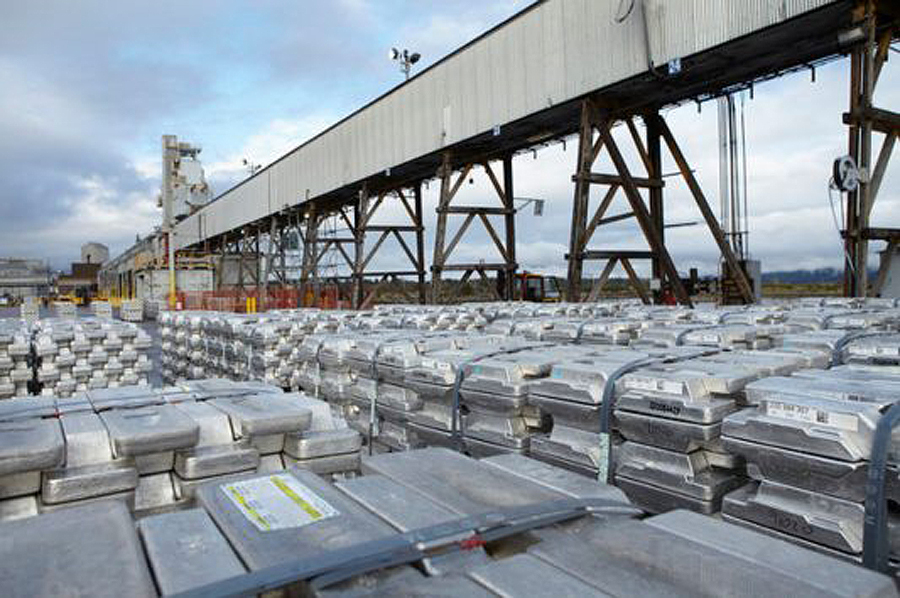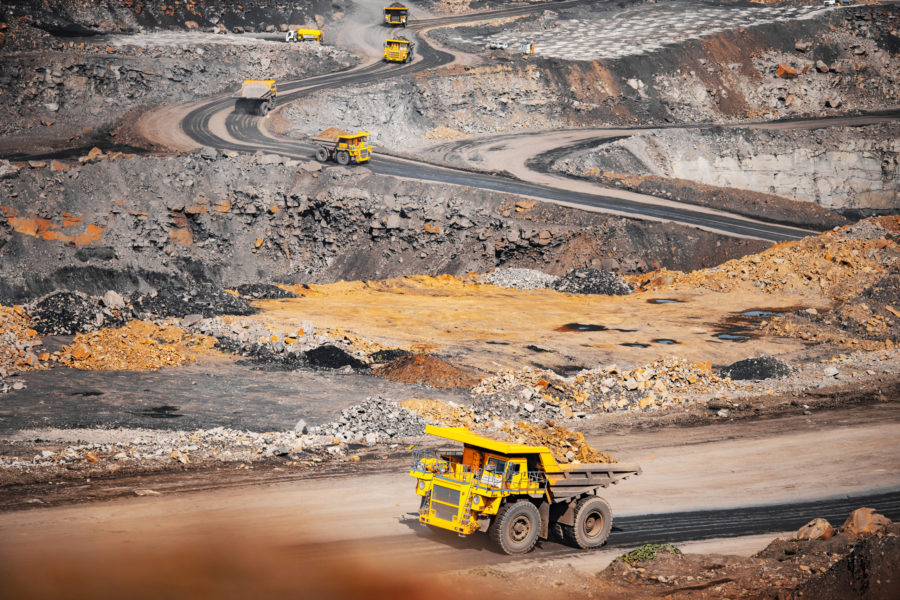Column: China lifts metals exports as Western supply chains buckle

(The opinions expressed here are those of the author, Andy Home, a columnist for Reuters.)
China exported 45,260 tonnes of primary aluminum in March, the highest monthly total since April 2010, with almost half of it to the Netherlands.
The month before 20,000 tonnes of metal left China destined for Montenegro and another 5,000 tonnes for Italy.
Exports of unwrought aluminum are subject to China’s 15% export duty, which has acted as a significant barrier to outbound flows in the past. Chinese producers prefer to process their metal into semi-manufactured form (semis) to reap the rewards of a tax rebate on value-add product exports.
The current highly unusual flow of Chinese unwrought aluminum to Europe attests to the extreme dislocation in global supply chains resulting from the war in Ukraine.
It’s not just aluminum.
China has become a major supplier of refined lead to the rest of the world, while refined zinc exports in the first three months of 2022 have already eclipsed last year’s total.
Copper and nickel trade patterns remained import-driven in the first quarter but exports of both metals also jumped in March.
Related Article: Aluminum price rises on low supply as base metals end fear-filled week
All changes in aluminum
China, the world’s largest aluminum producer, started importing metal in a big way in 2020 as domestic smelters curtailed output in what turned out to be a rolling power crunch.
Imports of primary unwrought metal totaled 1.1 million tonnes in 2020 and 1.6 million tonnes in 2021, China’s sudden hunger for aluminum transforming the global market landscape.
Trade patterns flipped again in the first quarter of this year, China turning a net exporter in both February and March as imports collapsed and metal started leaving for Europe.
European production has been badly hit by high power pricing with multiple smelters reducing run rates, while a major question mark hangs over the future of Russian supply.
Rusal has not been directly sanctioned but the closure of its Ukrainian alumina refinery coupled with an Australian ban on alumina exports to Russia threaten the producer’s raw material supply chains.
One option may be to source alumina from China and it’s interesting to note that China exported almost 10,000 tonnes to Russia in March, the highest monthly total since 2011.
At the metal stage of the processing chain, however, it’s clear that Europe’s deficit is growing and is now sucking in metal directly from China.
Understandably given the tax incentive, China’s exports of semis are also mushrooming to fill supply gaps in the rest of the world.
The outbound flow of semis rose by 18% to 5.5 million tonnes last year and picked up another 23% in the first quarter of 2021.
Supplier of last resort
Chinese exports have become the new normal in the lead market since August of last year.
Smelter closures in both Europe and the United States created acute supply tightness and soaring physical premiums in both regions.
China has become the supplier of last resort, exporting 95,000 tonnes of refined metal last year and another 38,000 tonnes in the first quarter of 2022.
Over the last six reported months the country has shipped 37,000 tonnes to the United States, 22,000 tonnes to the Netherlands and 15,000 tonnes to Turkey.
There are signs that zinc may be following in the footsteps of its sister metal as European smelters power down and London Metal Exchange (LME) stocks shrink.
Might China also come to the rescue? Exports of 13,800 tonnes of refined zinc in the first quarter were marginal in volume terms but still higher than last year’s total tally of 5,300 tonnes.
The largest single component was a shipment of just over 10,000 tonnes to Turkey in January.
Zinc exports are also subject to varying rates of export tax up to 15%, making such outbound cargoes to such far-flung destinations highly unusual.
Exports are not yet large enough to outweigh the continued flow of refined zinc into the country but the country’s net pull on units from the rest of the world is rapidly diminishing.
Net imports of refined zinc totalled 28,100 tonnes in the first three months of the year, down 79% from 131,900 tonnes in the same period of last year.
Export blips?
China’s trade in both refined copper and refined nickel remains heavily biased on the import side.
But exports of both picked up noticeably in March itself. Copper exports of 45,000 tonnes were the highest monthly total since August last year with South Korea and Taiwan the major destinations.
Outbound shipments of refined nickel surged to 4,300 tonnes in March, the highest volume in a year.
Given that most of the nickel headed in the same direction as the copper – South Korea and Taiwan – this could well be metal being delivered to LME warehouses against short positions.
In both cases, however, the uptick in exports served to reduce the net call on metal from the rest of the world.
Net refined copper imports fell by 1.9% to 837,000 tonnes in the first quarter of 2022. Net refined nickel imports of 50,800 tonnes were up by 74% year-on-year but from a particularly low 2021 base. Relative to the fourth quarter of 2021, they were down by 41%.
Tilting axis
Higher exports of refined copper and nickel may prove short-lived phenomena, particularly if the metal is being delivered against LME positions.
However, the proliferation of shipments of Chinese aluminum, lead and zinc to Europe, Turkey and even the United States suggests a new dynamic may be evolving, one where China turns from the world’s largest metals buyer to largest supplier.
This is a natural result of China’s drive to build out domestic smelting and refining capacity in recent years, moving its import dependency from refined to raw materials stage of the processing chain.
But refined metal exports are not the obvious outcome given all the base metals carry some level of tax burden.
The fact that so much metal is on the move despite China’s tax wall tells you how stressed supply chains are everywhere else.
(Editing by Emelia Sithole-Matarise)
{{ commodity.name }}
{{ post.title }}
{{ post.date }}

Comments